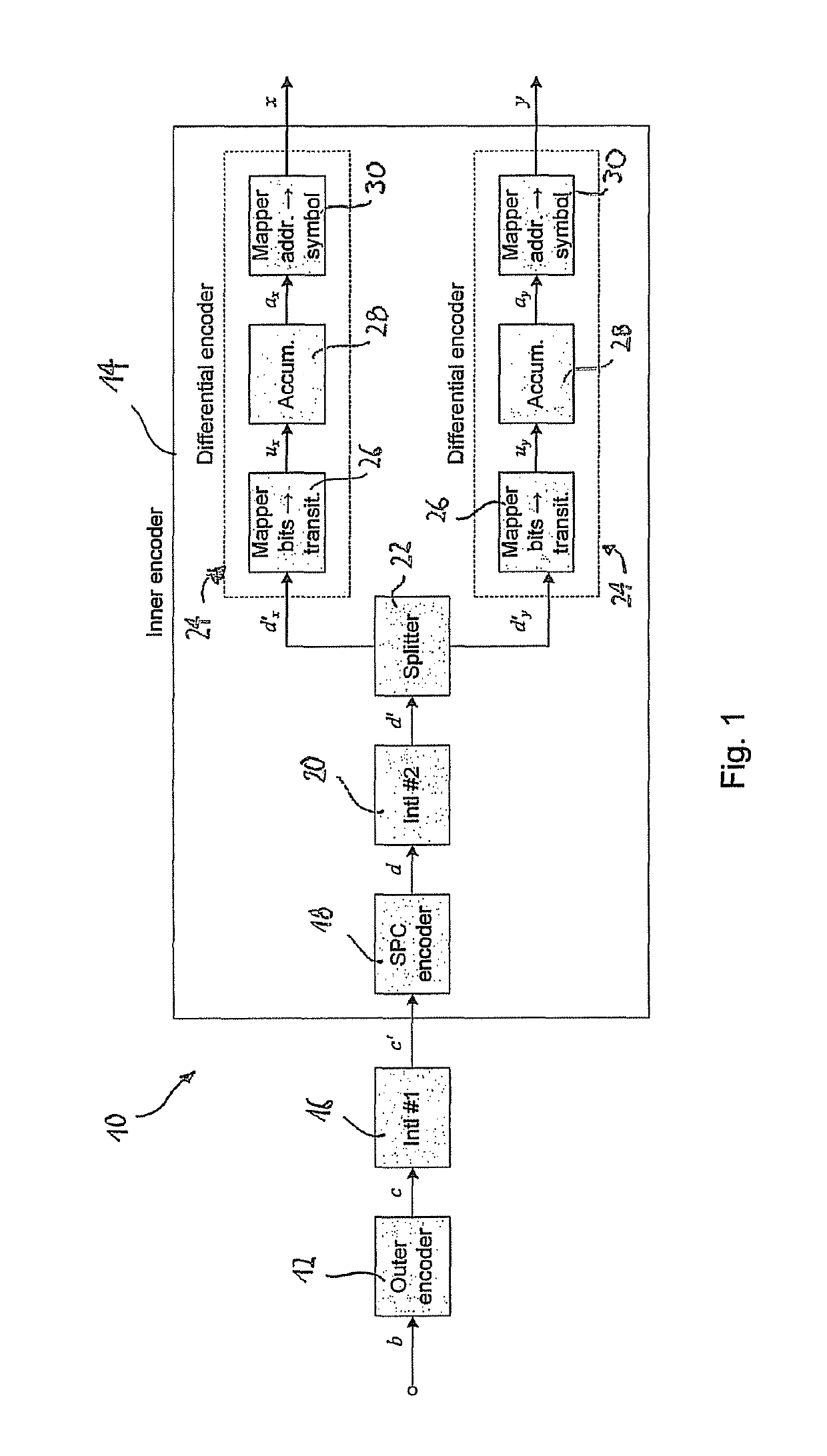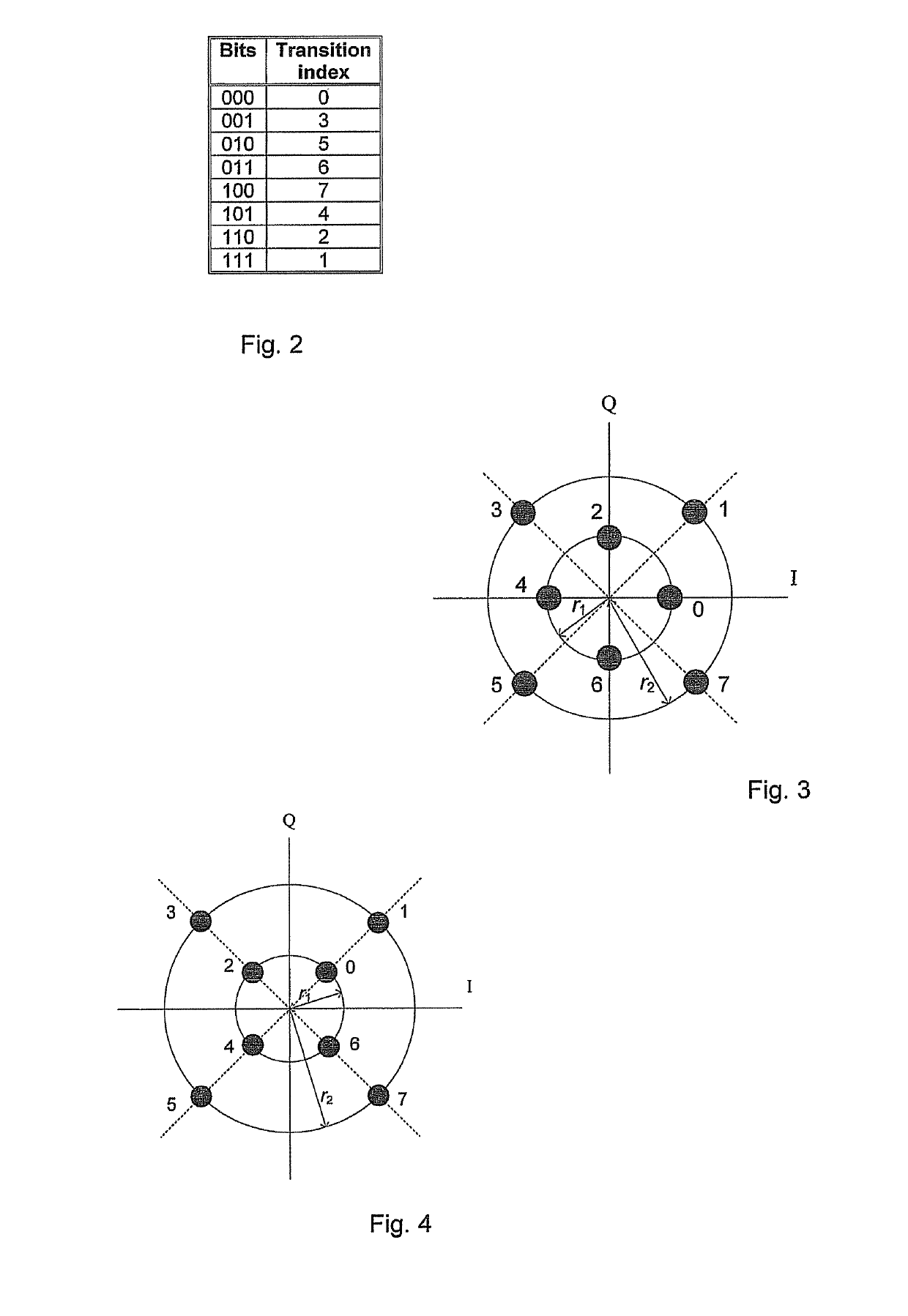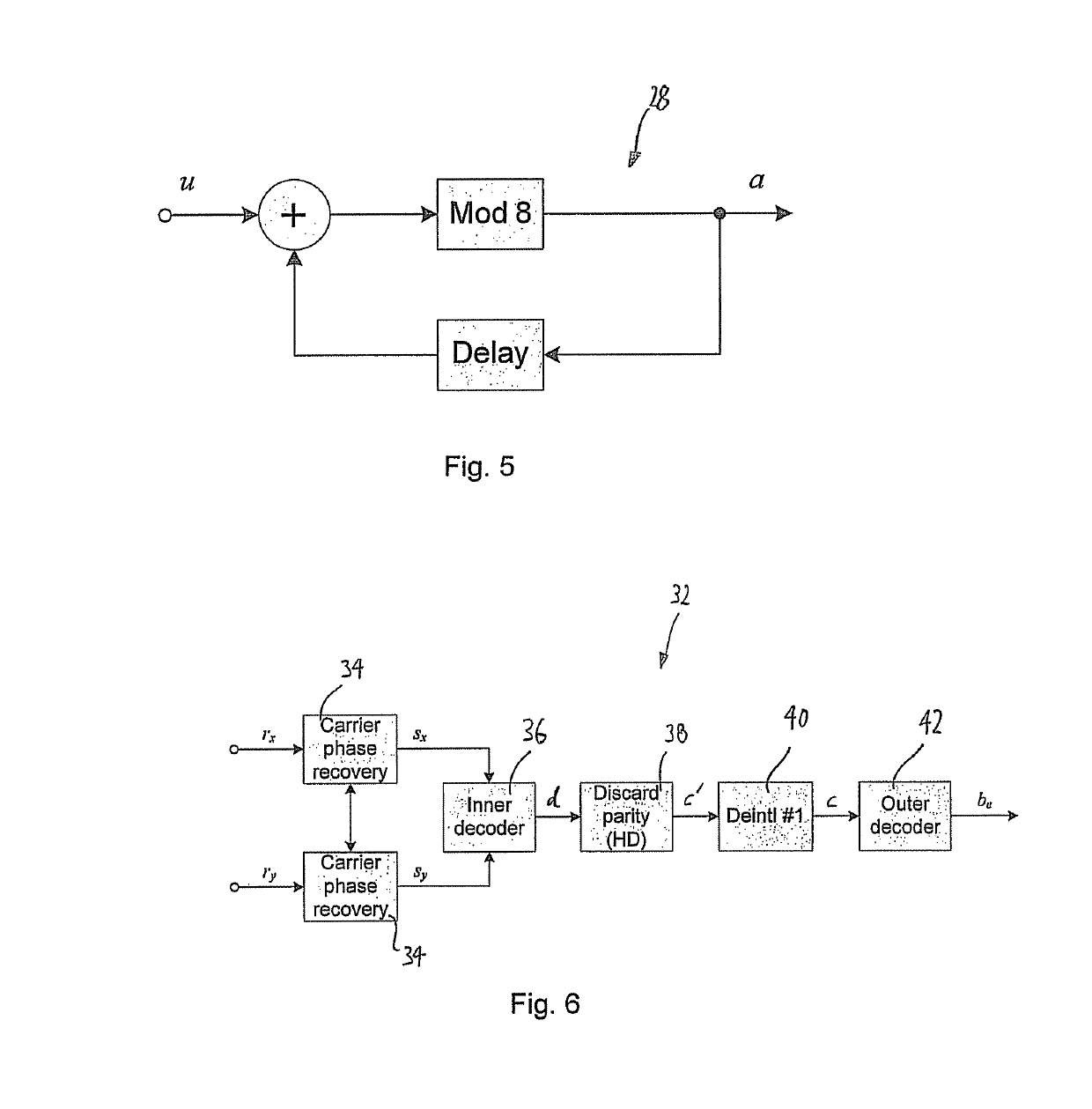Cycle slip resilient coded modulation for fiber-optic communications
a fiber-optic communication and coded modulation technology, applied in the field of channel coding and metro fiberoptic communications, can solve the problems of unused spectrum within each frequency slot, baud rate, and inability to directly exploit occupied spectrum, and achieve the effect of large error
- Summary
- Abstract
- Description
- Claims
- Application Information
AI Technical Summary
Benefits of technology
Problems solved by technology
Method used
Image
Examples
Embodiment Construction
[0055]For the purposes of promoting an understanding of the principles of the invention, reference will now be made to the preferred embodiments illustrated in the drawings and specific language will be used to describe the same. It will nevertheless be understood that no limitation of the scope of the invention is thereby intended, such alterations and further modifications in the illustrated device and method and such further applications of the principles of the invention as illustrated therein being contemplated therein as would normally occur now or in the future to one skilled in the art to which the invention relates.
[0056]FIG. 1 is a schematic block diagram of a transmitter 10 employing an encoding scheme according to one embodiment of the present invention. The transmitter 10 of FIG. 1 comprises an outer encoder 12 and an inner encoder 14. The outer encoder 12 receives digital data b and encodes the same according to an outer coding scheme having a small overhead of less th...
PUM
 Login to View More
Login to View More Abstract
Description
Claims
Application Information
 Login to View More
Login to View More - R&D
- Intellectual Property
- Life Sciences
- Materials
- Tech Scout
- Unparalleled Data Quality
- Higher Quality Content
- 60% Fewer Hallucinations
Browse by: Latest US Patents, China's latest patents, Technical Efficacy Thesaurus, Application Domain, Technology Topic, Popular Technical Reports.
© 2025 PatSnap. All rights reserved.Legal|Privacy policy|Modern Slavery Act Transparency Statement|Sitemap|About US| Contact US: help@patsnap.com



